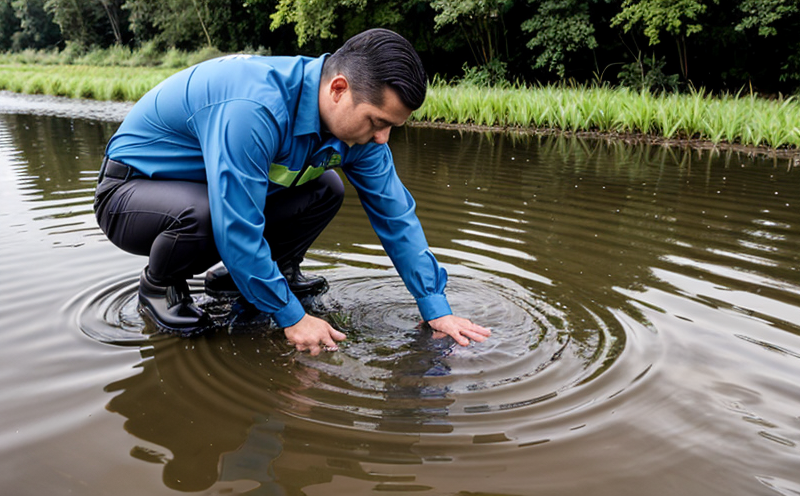Surface water monitoring inspection
Surface water monitoring is a critical aspect of environmental surveillance and energy systems management. This process involves the systematic assessment of various parameters in surface water bodies to ensure compliance with established environmental standards, support decision-making, and safeguard public health and ecosystems.
The primary objective of surface water monitoring inspections is to gather accurate, reliable data that can be used to evaluate the quality of surface water such as rivers, lakes, and streams. This information is crucial for identifying pollutants, tracking changes in water quality over time, and addressing potential environmental issues before they escalate into larger problems.
In the context of energy systems, surface water monitoring plays a significant role by ensuring that cooling systems used in power plants or other industrial facilities do not contribute to water pollution. This contributes directly to sustainability goals and helps maintain regulatory compliance with international standards like ISO 14001 for environmental management.
For quality managers and R&D engineers, understanding the intricacies of surface water monitoring is essential as it informs product development processes aimed at reducing negative impacts on natural environments. Compliance officers also rely heavily on accurate monitoring results when auditing internal practices against external regulations such as those outlined by the Environmental Protection Agency (EPA).
The scope of a typical surface water monitoring inspection includes analyzing multiple parameters including but not limited to pH levels, turbidity, dissolved oxygen content, temperature variations, salinity, and concentrations of pollutants like heavy metals, nutrients, and organic compounds. Specimen preparation involves collecting representative samples from different locations within the body of water being monitored.
Instrumentation used during these inspections ranges widely from simple handheld meters capable of measuring basic pH levels to sophisticated laboratory equipment designed for more complex analyses such as atomic absorption spectrometry or gas chromatography-mass spectrometry. Reporting practices vary depending on specific requirements set forth by relevant bodies but generally involve presenting findings in clear, concise reports accompanied by graphs and charts illustrating trends over time.
Given its importance across various sectors including energy production, water treatment facilities, agricultural operations, and municipal waste management systems, surface water monitoring cannot be overstated. It serves as an essential tool for maintaining ecological balance while supporting sustainable development initiatives globally.
Why It Matters
The quality of our environment directly influences human health and well-being, making it imperative to monitor surface waters effectively. Poorly managed surface water bodies can lead to widespread contamination affecting drinking water supplies, aquatic life habitats, and recreational areas used by communities.
- Water Quality Improvement: Regular monitoring helps identify sources of pollution early on allowing for targeted interventions before they cause significant harm.
- Sustainable Development: By ensuring that industrial processes comply with environmental standards, we promote long-term sustainability which benefits future generations.
- Public Health Protection: Clean surface waters are vital for maintaining good health. Monitoring ensures that drinking water sources remain safe and free from harmful substances.
For those involved in the energy sector particularly with respect to thermal power plants, proper management of cooling towers is crucial not only because it impacts operational efficiency but also because it helps prevent environmental degradation caused by discharge into nearby surface waters. Understanding this aspect enables better decision-making regarding water usage and treatment methods.
Why Choose This Test
Selecting the appropriate testing method for surface water monitoring is vital to ensure accurate results that are representative of actual conditions in the environment being studied. Here are some reasons why choosing this particular test could benefit your organization:
- Precision and Accuracy: Using advanced instrumentation ensures precise measurements which are crucial when making informed decisions about environmental management strategies.
- Compliance Assurance: By adhering to internationally recognized standards like ISO 17025 for laboratories, you can be assured that your tests meet stringent quality assurance criteria.
- Rapid Results: Modern analytical techniques provide quick turnaround times allowing for timely responses to any issues detected during the inspection process.
The reliability of these tests further enhances their value by providing consistent and repeatable results. This consistency is particularly important when comparing data across multiple sites or over extended periods, facilitating trend analysis that informs strategic planning efforts.
International Acceptance and Recognition
Surface water monitoring inspections are widely recognized internationally due to their importance in ensuring environmental protection and public health. Several key organizations have established guidelines and standards for conducting these types of tests, which are generally accepted across borders:
- ISO 14030: This international standard provides requirements for the competence of bodies providing services related to the validation or verification of environmental performance.
- ASTM D7695: Developed by ASTM International, this standard specifies procedures for the collection and preservation of aquatic biological samples from surface waters.
The recognition accorded to these tests extends beyond national boundaries, ensuring that data generated is valid and comparable worldwide. This global consistency fosters collaboration among countries and organizations working towards common environmental goals.





